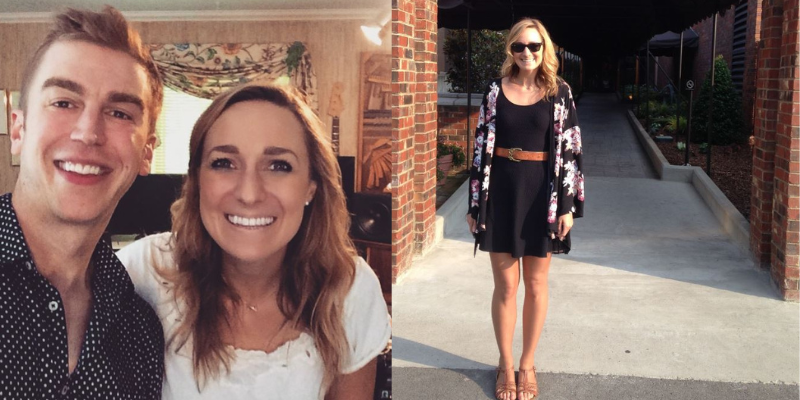
On the evening of March 28th, as clocks ticked toward 8:30 p.m., thousands were ready to flick off their lights for Earth Hour. But at the World Wildlife Fund Centre, something notably more electric was about to unfold. Emma Stevens, supported by the soulful folk-pop duo Hudson Taylor, stepped onto a dimly lit stage to lead a performance designed not to illuminate with wattage, but to enlighten with purpose.
By collaborating with Hudson Taylor during Earth Hour, Stevens crafted a performance that was both emotionally tender and particularly impactful. Candlelight cast flickers across her acoustic guitar while her voice, fluid yet strong, echoed a deeper plea—to protect, to preserve, to act. It wasn’t just a show. It was a statement, gently placed in the hands of those who attended and those watching online.
Hudson Taylor and Earth Hour! Emma Stevens
| Name | Emma Stevens |
|---|---|
| Profession | Singer-Songwriter, Environmental Advocate |
| Nationality | British |
| Collaboration | Hudson Taylor, Michael Spriggs, Trace Adkins |
| Special Event | Earth Hour Concert with Hudson Taylor |
| Date of Event | 28th March 2015 |
| Venue | WWF Centre |
| Key Theme | Environmental Awareness Through Music |
| Notable Traits | Acoustic Pop-Folk, Emotional Depth, Activism |
In recent years, artists have increasingly used their platforms for activism, but Stevens’ approach feels especially grounded. Through her music and candid writing—including a revealing piece submitted to Lonely Conservationists—she’s positioned herself not as a celebrity figurehead, but as a kindred spirit to those quietly working for change. By offering her platform for causes like Earth Hour, she amplifies the voices that don’t usually get heard.
For Stevens, sustainability isn’t a passing theme; it’s a consistent thread running through both her personal and professional narratives. Her journey into eco-awareness has been deeply personal, shaped by the quiet influences of family, her love of nature, and the persistent tug of emotional resilience. Rather than adopting environmentalism as a trend, she integrates it into her art with a sincerity that’s refreshingly rare.
The concert itself was strikingly simple. No flashing lights. No auto-tune. Just music stripped back to its essence—acoustic storytelling infused with raw emotion. Hudson Taylor’s presence added a melodic warmth, their harmonies blending effortlessly with Stevens’ airy vocals. The synergy between the artists felt natural, rooted in a shared desire to connect through authenticity rather than performance alone.
During the pandemic, as remote events surged, Stevens remained notably present online, writing music and sharing unfiltered reflections. In one entry, she described the struggle of forging a conservationist identity without a fixed job title or full-time role. Her honesty struck a nerve. Many who advocate for sustainability do so without applause, caught between economic survival and personal conviction. Stevens, by voicing that tension, gave it legitimacy.
By integrating these emotional layers into her Earth Hour performance, the message became more than symbolic. It became visceral. When she asked attendees to turn off their lights—not just physically, but emotionally disconnect from the noise of distraction—it felt like an invitation to realign with intention. For those present, the experience was not just enjoyable; it was grounding.
Artists like Billie Eilish and Coldplay have made similar pledges to tie their music to sustainability, but Stevens operates with less fanfare and more subtlety. Her music doesn’t shout; it soothes. And sometimes, what we need isn’t a call to arms—it’s a reminder of what’s at stake, spoken softly enough to be heard over the chaos.
The WWF Centre’s setting further reinforced the mood. The space, already charged with environmental urgency, transformed into a sacred chamber where art and activism briefly merged. As she played songs like “A Place Called You,” the meaning felt noticeably reimagined—less about romance, more about the places we cherish, the homes we risk losing to climate change, deforestation, and neglect.
Through strategic partnerships like this one with Hudson Taylor, Stevens demonstrates how collaborations can be remarkably effective in shaping public discourse. Her strength lies not just in her melodies, but in her method—choosing causes that matter, and executing with precision and heart. Her commitment isn’t seasonal; it’s ongoing, woven into every lyric, blog post, and studio session.
In the context of environmental advocacy, performances like this don’t just entertain—they reinforce a cultural narrative. One that suggests creativity and care are not mutually exclusive. Rather, when aligned, they become incredibly powerful. Hudson Taylor, known for their thoughtful songwriting, fit seamlessly into this vision. Their music shares the same emotional richness and folk simplicity, bridging generations through shared values and storytelling.
Over the past decade, Earth Hour has expanded far beyond its Australian origins. Cities like Amman have embraced it with public marches and community-led events, proving that localized action can resonate on a global scale. The Royal Society for the Conservation of Nature (RSCN), for example, has embraced Earth Hour for over ten years, turning dimmed streetlights into symbols of unified intent. Stevens’ performance added another layer—a personal, artistic testimony that underscores the emotional cost of environmental neglect.
By sharing her struggles—like moments of burnout, uncertainty, and guilt over career detours—she has become a relatable figure to those walking similar paths. Her participation in Earth Hour wasn’t just musical; it was emotionally intelligent, balancing awareness with hope. She didn’t just perform songs; she performed vulnerability, optimism, and responsibility—all at once.
In the coming years, as climate issues grow more urgent, voices like Stevens’ will be particularly valuable. Not because they’re loudest, but because they’re consistent. By staying close to her values and aligning with like-minded artists, she reminds us that quiet contributions still shape movements. Her work with Hudson Taylor illustrates a particularly innovative form of advocacy—one that uses gentleness as a force, not a flaw.
